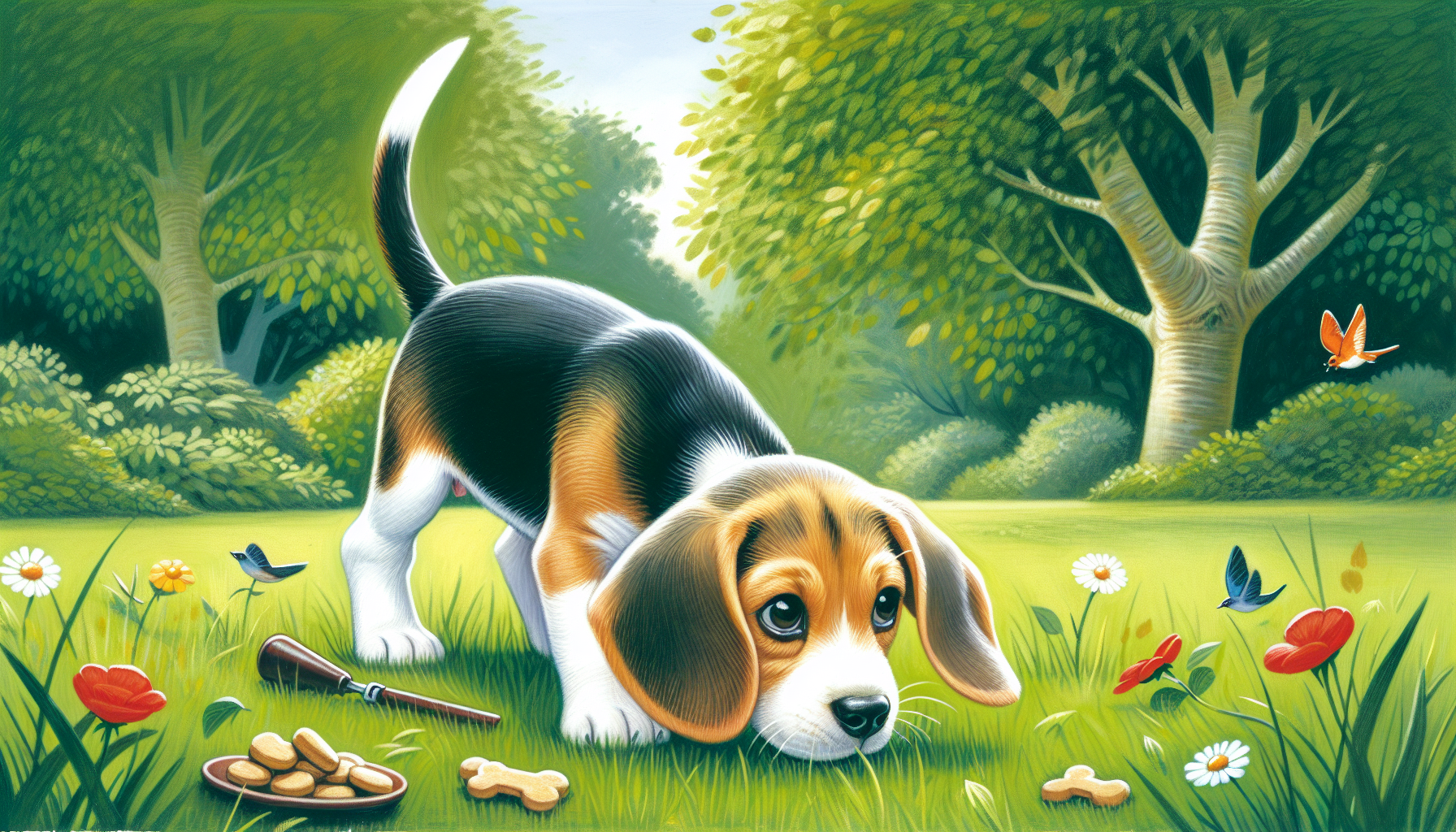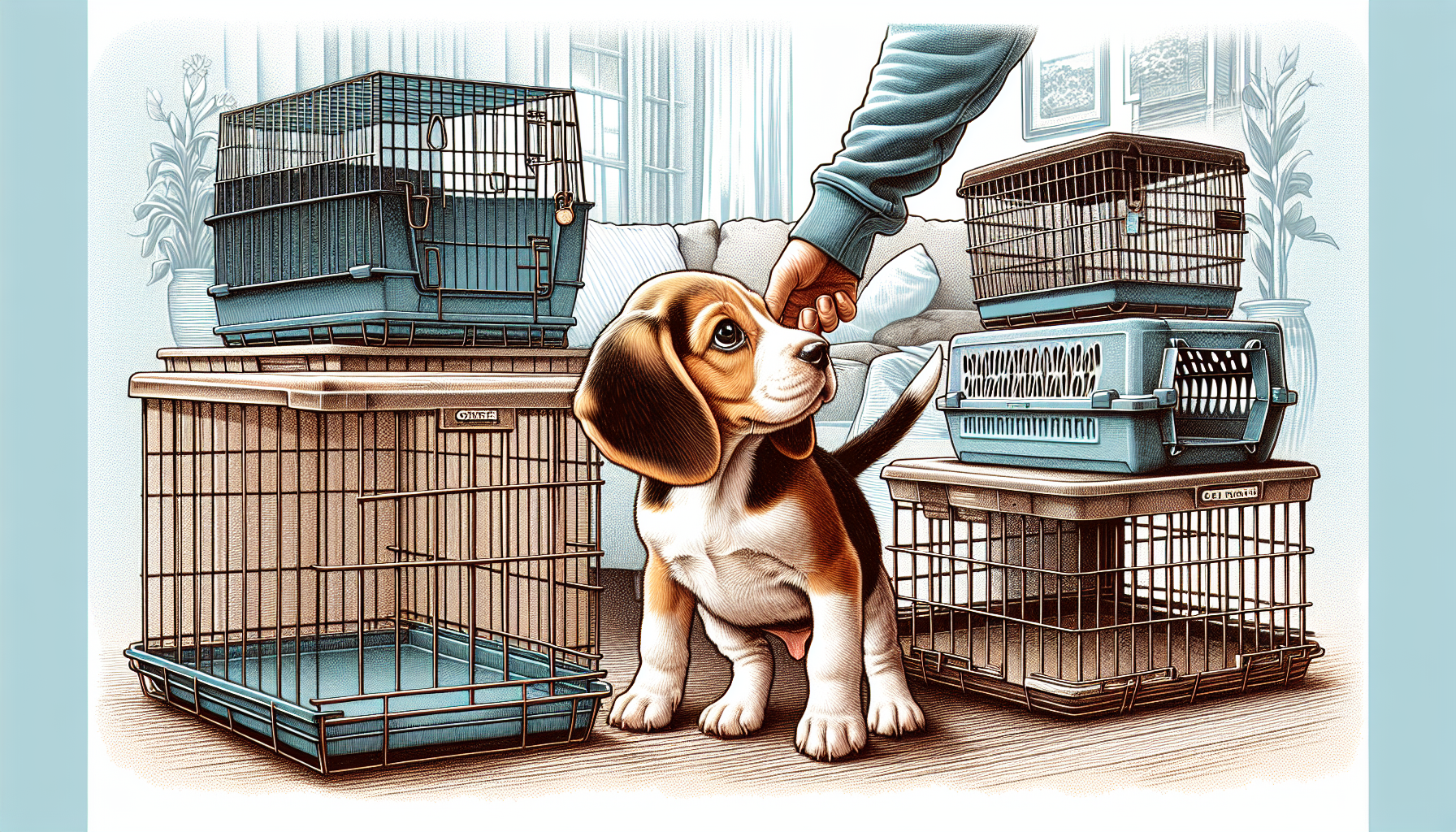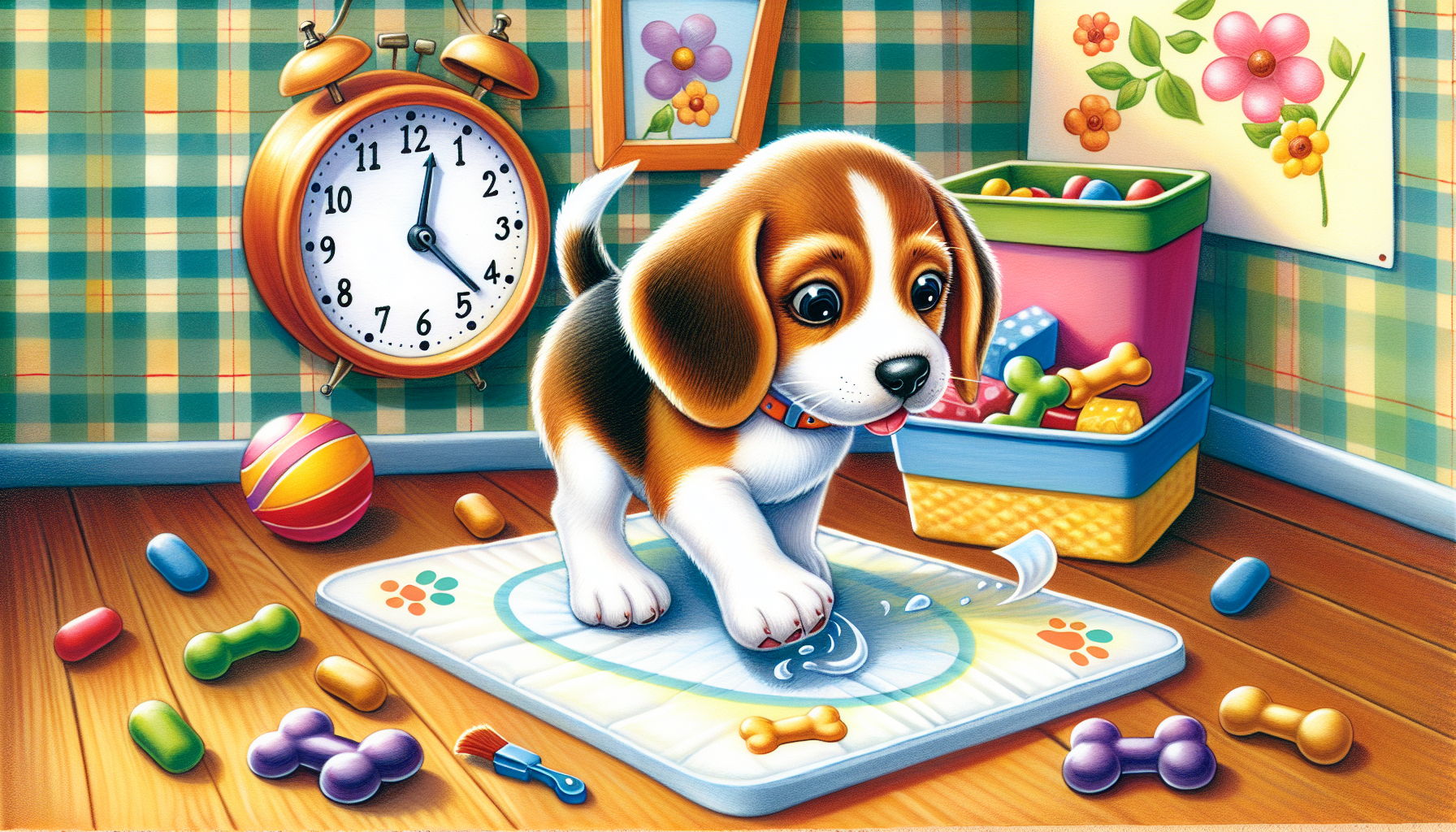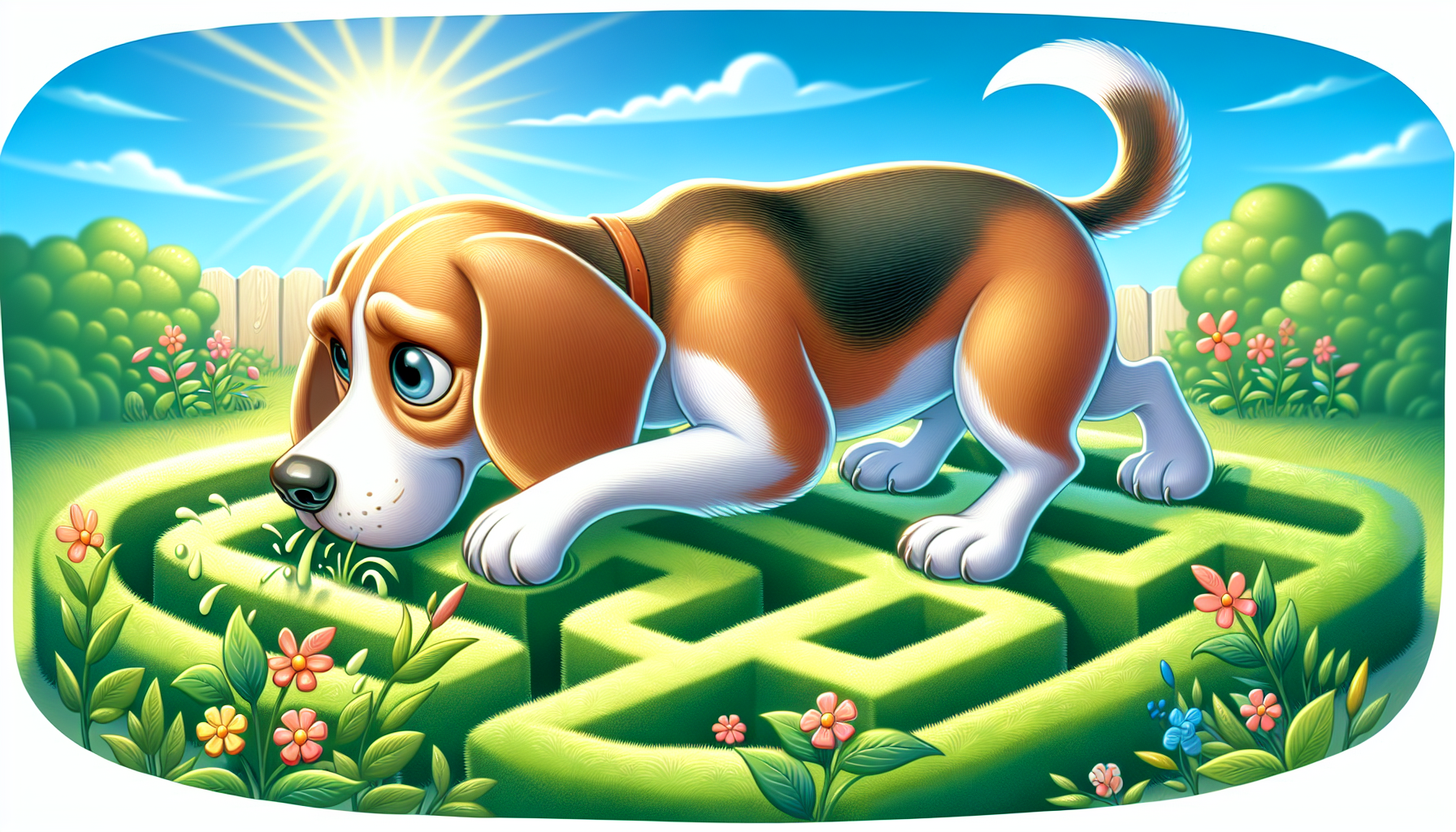Training a Beagle might seem like a daunting task, especially with their boundless energy and keen sense of smell, but with the right guidance, it’s entirely achievable. This guide offers supportive, step-by-step tips to help you effectively train your Beagle, transforming them into a well-behaved and joyful companion. By following these strategies, you can turn what might feel like a challenge into a rewarding experience, ensuring that both you and your Beagle enjoy the training process. Whether you're new to Beagle ownership or looking to improve your approach, this guide will provide the confidence and knowledge you need to succeed.
Key Takeaways
- Understand your Beagle’s high energy levels, keen sense of smell, and natural curiosity for effective training and safety.
- Start training your Beagle puppy early using positive reinforcement techniques like clicker training and treats.
- Crate training, consistent potty training, and socialization are essential for a well-behaved and confident Beagle.
Find out how to train your beagle to be the well-behaved pup you desire – Read Free Report
Understanding Beagle Behavior

Beagles are known for their high energy levels, keen sense of smell, and natural curiosity, which make them both delightful and challenging pets. Grasping these unique traits is vital for successful Beagle puppy training. Beagle puppies can be exceptionally hyper due to their curiosity and need for exploration. This hyperactivity is particularly noticeable between the ages of four months and twelve months, requiring proper methods to vent their energy.
Their keen sense of smell is a double-edged sword. While it makes them excellent scent hounds, it also means they can get easily distracted during training sessions as they follow various scents around them. This natural curiosity and tendency to track scents can make training more challenging but also more rewarding when approached correctly. For safety reasons, always leash your Beagles during walks to avoid them straying away.
Understanding these behaviors helps Beagle owners develop appropriate training plans that cater to their Beagle’s instincts and needs. When you acknowledge their high energy levels, keen sense of smell, and natural curiosity, a productive and enjoyable training environment for your Beagle puppy can be established.
#1 – Essential Equipment for Training a Beagle
Having the correct equipment is a necessity to train a Beagle puppy effectively. Here are some essential items:
- A robust, at least six feet long and lightweight leash for training
- A flat collar or Martingale collar for a comfortable and secure fit
- A treat pouch to keep treats handy in a washable, stink-resistant container
These items will make it easier to train and reward your Beagle promptly.
Some essential items for training your Beagle include:
- Small, meaty, or stinky treats: These are highly appealing and can quickly motivate your Beagle.
- Non-slip mat: Provides a stable and secure area for your Beagle to perform commands and activities.
- Chews: Provide a healthy outlet for your Beagle’s natural chewing instincts and keep them engaged.
Possessing these vital tools will streamline and optimize the training process. Whether you’re focusing on obedience training, crate training, or socializing your Beagle, the right equipment can significantly enhance your training efforts and ensure your Beagle pup responds positively to the training sessions.
#2 – Starting Training Early
Initiating training for your Beagle puppy as soon as they arrive home is imperative. Starting early will help establish good behavior habits and strengthen your bond with your pet. Training them early not only helps them learn obedience, but also strengthens their bond with the owner. This early training is crucial for developing a strong and positive relationship between the pet and the owner. Starting training early can make the process more manageable since puppies are more adaptable at a young age. At eight weeks old, a Beagle puppy is ready for potty training and learning basic commands. Establishing a consistent schedule is crucial for effective training.
Clicker training is an effective method for positive reinforcement, where a click noise followed by a treat rewards desired behaviors. Treats and praise help make training a pleasant bonding experience for Beagle puppies, particularly when introducing them to new experiences. One-on-one in-home training sessions can create a comfortable learning environment for Beagles, allowing them to feel secure and focused.
Starting early and employing positive reinforcement techniques lays a solid foundation for a well-mannered Beagle puppy. Consistency and patience are key during this initial training phase, and the bond you build with your puppy during this time will last a lifetime.
#3 – Crate Training Your Beagle Puppy

Crate training forms an integral part of house training and offers a secure space for your Beagle puppy. When selecting a crate, choose one that accommodates your puppy’s expected adult size and use a removable divider to adjust as they grow. The crate should:
- Allow your Beagle to stand up
- Fit through the door effortlessly
- Turn around comfortably
- When lying on their side, the dog should be able to fully extend their limbs within the crate.
Using a crate that is too tight can lead to negative feelings about the space and hinder crate training. Conversely, a crate that is too large may lead to accidents inside the crate. Consider the type of bedding you plan to use as it will take up additional space in the crate.
Crates made of coated steel wire are:
- Durable
- Easy to clean
- Provide good ventilation
- Let your dog see around
Proper crate training can assist in potty training by utilizing the puppy’s instinct to avoid soiling their sleeping area.
#4 – Potty Training Tips

Potty training a Beagle demands:
- Consistency
- Attention
- Patience
- Understanding
It’s vital to maintain a regular schedule, and taking your Beagle outside every hour helps reinforce the routine. Puppy pads can be useful for indoor training, provided they are placed in a designated spot to help your puppy learn where it is appropriate to relieve themselves indoors.
Rewarding your puppy immediately after they relieve themselves outside reinforces good behavior. Use a specific command while they are relieving themselves to help associate the word with the action. Taking the puppy outside after meals and naps can reduce the likelihood of indoor accidents.
If accidents occur inside, clean the area thoroughly to remove any odor that might attract the puppy back to the same spot.
#5 – Teaching Basic Commands

Instructing your Beagle basic commands requires consistent verbal cues, treats, and praise. Positive reinforcement is key, and Beagles respond well to food rewards. Start with short, frequent training sessions to keep your Beagle engaged and teach one command at a time to avoid confusion.
As your Beagle becomes more reliable in obeying commands, gradually reduce the frequency of treats. Incorporate a variety of rewards, such as toys or favorite activities, to maintain their interest. By focusing on one command at a time and using positive reinforcement, you can effectively teach your Beagle basic commands and build a foundation for more advanced training.
#6 – Socializing Your Beagle Puppy
To ensure Beagle puppies develop into kind, confident, and well-adjusted dogs, early socialization for Beagle is indispensable. Here are some tips for socializing your Beagle puppy:
- Start socializing your puppy from eight weeks old.
- Introduce them to new environments and family members.
- Expose them to a variety of people and environments to make them less fearful and more adaptable.
By following these tips, you can help your Beagle puppy become a well-socialized and happy dog.
Between 8-16 weeks, Beagle puppies should be exposed to various dogs, people, places, and situations to learn socialization skills. Gradual exposure to new stimuli, starting with short manageable sessions, helps reduce a Beagle’s anxiety. Some ways to socialize your Beagle puppy include:
- Taking them to the park to meet other dogs and people
- Introducing them to different environments, such as busy streets or crowded areas
- Enrolling them in a socialization class, such as the AKC S.T.A.R. Puppy Program, which provides a structured environment for training and interaction.
These activities will help your Beagle puppy develop good manners and become comfortable in different situations, making your beagle puppy home a happy and harmonious place with proper beagle training.
Encouraging exploration in a controlled environment helps build a Beagle’s confidence. Introducing Beagle puppies to a variety of people helps build their social confidence. Group training classes can enhance socialization with other dogs and people, making your Beagle a well-mannered companion.
#7 – Addressing Common Training Challenges
Beagle owners often face challenges like separation anxiety and boredom, which can lead to behavioral issues. Separation anxiety in Beagles is often indicated by behaviors such as:
- whining
- pacing
- panting
- destructive actions like chewing door and window frames
If you need to leave your Beagle alone for more than four hours, arranging for a dog walker or sitter can help.
Advanced obedience training can alleviate separation anxiety and curb behaviors like howling and whining. To prevent boredom that mimics separation anxiety, you can:
- Increase your Beagle’s daily exercise
- Provide interactive toys like Kongs filled with food
- Use hollow food-filled toys to help Beagles settle quietly after their owners leave, reducing anxiety and boredom.
Using toys like Buster Cubes that dispense food as they are pushed around can engage Beagles and prevent boredom when they are alone. By addressing these common training challenges with proactive techniques, you can ensure your Beagle remains happy and well-behaved.
#8 – Incorporating Exercise into Training

Including exercise in training is crucial to manage your Beagle’s energy levels and to keep boredom at bay. Beagles require at least an hour of daily physical activity to maintain a healthy weight and satisfy their hunting instincts. Regular exercise helps Beagles manage their energy levels by providing an outlet for their natural drive to be active.
Scent-based games and activities provide both physical and mental enrichment for Beagles. Scheduling ‘scenting sessions’ can engage their natural hunting instincts and mitigate hyper behavior. Adding challenges like running over obstacles or using long leads for more freedom can help hyper Beagles expend their energy.
Regular walks and exercise help keep the energy level down and prevent pent-up and bored behavior in energetic dogs. By incorporating exercise into the training process, you can ensure your Beagle stays fit, healthy, and mentally stimulated.
#9 – Advanced Training Techniques
Implementing advanced training techniques like “Brain Training for Dogs” can significantly enhance your Beagle’s skills and strengthen your bond. Obedience training is crucial as it teaches Beagles the importance of listening and responding to commands. Engaging in AKC activities such as tracking, obedience, and agility is beneficial as these exploit their natural scent hound instincts.
The “Brain Training for Dogs” program offers comprehensive training in advanced obedience and behavioral modification, aimed at mastering off-leash control. Dog trainers who specialize in therapy and service dog training are particularly suitable for Beagles, given their high intelligence and trainability.
By utilizing these advanced training methods, you challenge your Beagle and assist them in reaching their full potential. Here are some activities that can enhance their skills while providing both mental and physical stimulation:
- Agility training
- Nose work
- Advanced obedience training
- Tracking
- Canine sports such as flyball or dock diving
These activities not only improve their capabilities but also mold your Beagle into an excellent and well-rounded companion.
#10 – Building Confidence in Your Beagle
Instilling confidence in your Beagle is fundamental to their overall well-being. At this stage of training, it’s vital to teach puppies to relish challenges and foster confidence. Beagle puppies begin to make connections and learn through repetition at around 12 weeks of age. This is an important stage in their development as they start to understand and retain information.
Observing a puppy’s reactions during new experiences is essential to calibrate the situation without overwhelming them. Some tips for introducing new experiences to your puppy include:
- Encouraging exploration
- Gradually introducing new experiences
- Providing positive reinforcement and rewards
- Creating a safe and comfortable environment
These strategies will help build your puppy’s confidence and resilience.
By fostering a supportive and challenging environment, you can help your Beagle grow into a confident and well-adjusted dog. Patience and positive reinforcement are key to building their confidence and ensuring they thrive in various situations.
Summary
Training a Beagle requires understanding their unique traits, having the right equipment, and starting early. From crate training and potty training to teaching basic commands and socializing your Beagle, each step plays a vital role in their development. Addressing common training challenges and incorporating exercise into training ensures they remain happy and well-behaved.
By implementing advanced training techniques and building confidence, you can help your Beagle reach their full potential. Embrace the journey of training your Beagle with patience and consistency, and you’ll have a well-mannered and loving companion for years to come.
Frequently Asked Questions
When should I start training my Beagle puppy?
Start training your Beagle puppy as soon as you bring them home to establish obedience and build a strong bond with them.
What are the essential equipment items for training a Beagle?
Make sure to have a treat pouch, comfortable collar and harness, leash, non-slip mat, treats, and chews for training your Beagle effectively. These items will help you create a positive training environment.
How can I address my Beagle's separation anxiety?
To address your Beagle's separation anxiety, try advanced obedience training, increased exercise, and interactive toys. These can help alleviate the anxiety and provide mental stimulation for your dog.
How much exercise does a Beagle need?
Beagles need at least an hour of exercise every day to stay healthy and happy. Regular physical activity helps them maintain a healthy weight and fulfill their hunting instincts.
How can I build confidence in my Beagle?
You can build confidence in your Beagle by teaching them to enjoy challenges, monitoring their responses during new experiences, and gradually introducing new experiences. Happy training!
Learn how to train your beagle to be the well-behaved dog you desire –> Access our Free Report
Shop for beagle-themed products and gifts that beagle enthusiasts will love.

